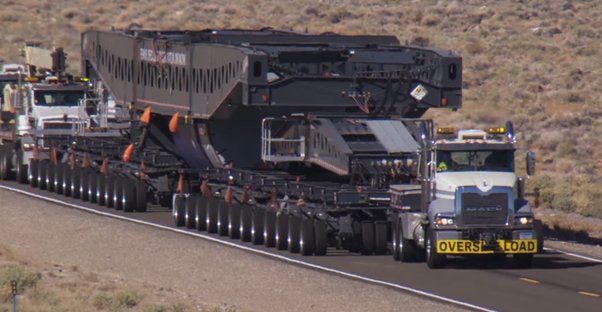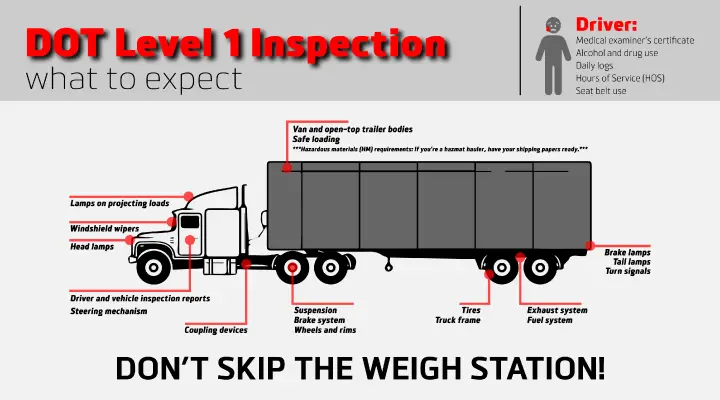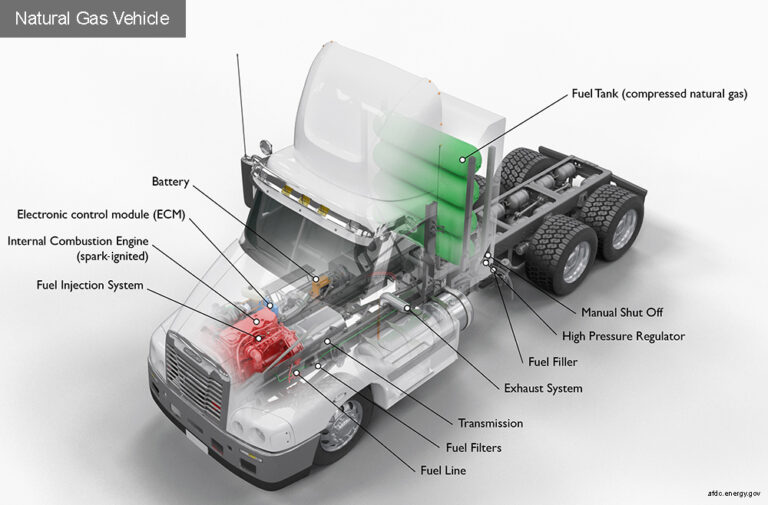
Semi trucks have many gears to optimize performance for various road and cargo conditions. This allows them to efficiently handle the vast range of loads and terrain they encounter.
Semi trucks, also known as tractor-trailers or 18-wheelers, are designed for long-haul transportation of heavy loads. The abundance of gears in these vehicles enables them to effectively navigate steep inclines, steep descents, and varying road conditions while maximizing fuel efficiency.
The versatile gear ratios accommodate differing loads, from light to heavy, and enable trucks to maintain steady speeds without overworking the engine. Additionally, the multiple gears help these trucks to start from a full stop while towing heavy loads, as well as to achieve high speeds on the open road. Such a complex gear arrangement allows semi trucks to perform optimally under a wide range of driving conditions, making them crucial for the smooth functioning of the logistics industry.

Credit: www.internationalusedtrucks.com
Navigate As You Want: [show]
Importance Of Gears In Semi Trucks
Semi trucks have multiple gears for efficient power transmission and optimal engine performance. By having a wide range of gears, semi trucks can adapt to various road and load conditions, improving overall fuel efficiency and reducing wear and tear on the engine.
The primary function of gears in these vehicles is to ensure the power generated by the engine is effectively transmitted to the wheels. When starting from a standstill or climbing uphill, lower gears provide a greater torque and enable the truck to overcome the initial resistance. As the vehicle gains momentum or reaches higher speeds, higher gears allow the engine to operate at its most efficient range.
| Benefits of multiple gears in semi trucks: |
|---|
| 1. Enhanced fuel efficiency |
| 2. Improved handling of different road conditions |
| 3. Reduced engine strain and wear |
| 4. Better acceleration and towing capabilities |
In conclusion, the numerous gears in semi trucks play a crucial role in optimizing power transmission, enhancing fuel economy, and ensuring smooth and efficient operation under diverse driving conditions.
Factors Influencing The Number Of Gears In Semi Trucks
Semi trucks have multiple gears to accommodate different load capacities, making it easier to handle heavy cargo. The number of gears is also determined by the terrain the truck will be navigating, requiring more gears for challenging landscapes. Additionally, the fuel efficiency of semi trucks is optimized by having numerous gears to ensure the engine operates at its most efficient range for varying speeds and loads.
Advantages Of Having Multiple Gears
Semi trucks have a lot of gears for several reasons. The multiple gears allow for improved acceleration, making it easier for the truck to get up to speed. This is particularly important when hauling heavy loads, as the extra gears provide better hauling capabilities. Additionally, having more gears can help reduce wear and tear on the engine and transmission, prolonging the life of the truck’s components. Overall, the presence of multiple gears in semi trucks offers several advantages that contribute to their efficiency and longevity.
Transmission Systems In Semi Trucks
Semi trucks are equipped with transmission systems that allow the driver to change gears and transfer power from the engine to the wheels. Manual transmissions are commonly used in semi trucks, providing greater control and fuel efficiency. These systems require the driver to manually shift gears using a clutch pedal and gearshift lever. The number of gears in a manual transmission varies, with some semi trucks having as many as eighteen gears. This enables the driver to select the appropriate gear for different driving conditions, such as climbing steep hills or carrying heavy loads.
On the other hand, some semi trucks are equipped with automatic transmissions. These transmissions automatically shift gears based on factors such as vehicle speed and engine load. Automatic transmissions offer convenience, allowing the driver to focus more on the road and reducing the need for constant gear shifting. However, they may not be as fuel efficient as manual transmissions, especially when driving in hilly terrains or carrying heavy loads.
Future Trends In Semi Truck Transmissions
The future of semi-truck transmissions is undoubtedly shifting towards more advanced technologies. One of the emerging trends is the widespread adoption of automated manual transmissions (AMTs). AMTs provide a seamless driving experience by combining the efficiency of a manual transmission with the ease of an automatic transmission. With automated shifting, drivers can focus more on the road, improving safety and reducing driver fatigue. Another significant trend is the integration of electric powertrains in semi-trucks. Electric powertrains offer numerous benefits such as reduced emissions, quieter operation, and lower maintenance costs. Additionally, advanced gear configurations are being developed to optimize the performance and fuel efficiency of semi-trucks. These configurations provide a wider range of gear ratios, allowing the engine to operate at its most efficient speed in diverse driving conditions. These trends are reshaping the future of semi-truck transmissions, making them more efficient, sustainable, and reliable.

Credit: www.youtube.com
Credit: www.quora.com
Frequently Asked Questions On Why Do Semi Trucks Have So Many Gears
How Many Gears Does A Semi Truck Have?
A semi truck typically has anywhere from 10 to 18 gears, depending on the make and model. These gears provide the necessary torque and power to efficiently navigate different terrains and carry heavy loads.
Why Do Semi Trucks Need So Many Gears?
Semi trucks require a wide range of gears to optimize performance in various driving conditions. The multiple gears allow the truck’s engine to operate at its most efficient speed, providing better fuel economy, improved acceleration, and easier handling when climbing hills or carrying heavy loads.
How Does Having More Gears Benefit A Semi Truck?
Having more gears allows a semi truck’s engine to remain within its optimal RPM range, maximizing its torque and power output. This not only enhances the truck’s performance and fuel efficiency but also reduces wear and tear on the engine, resulting in longer engine life and lower maintenance costs.
Do All Semi Trucks Have Manual Transmissions?
No, not all semi trucks have manual transmissions. While manual transmissions used to be more common, many modern semi trucks now come equipped with automatic transmissions. Automatic transmissions offer the convenience of easier shifting and can be more efficient in certain driving situations.
Conclusion
The abundance of gears in semi trucks serves a vital purpose in optimizing their performance. These multiple gears allow for a smooth transition of power between the engine and the wheels, ensuring maximum efficiency in different driving conditions. By providing the right balance of torque and speed, these gears enable the truck to haul heavy loads, conquer steep inclines, and maintain optimal fuel economy.
The intricate gear ratios in semi trucks make them powerful machines that are capable of tackling various challenges on the road. So, the next time you see a semi truck with an array of gears, remember that each one plays a crucial role in its overall functionality.



